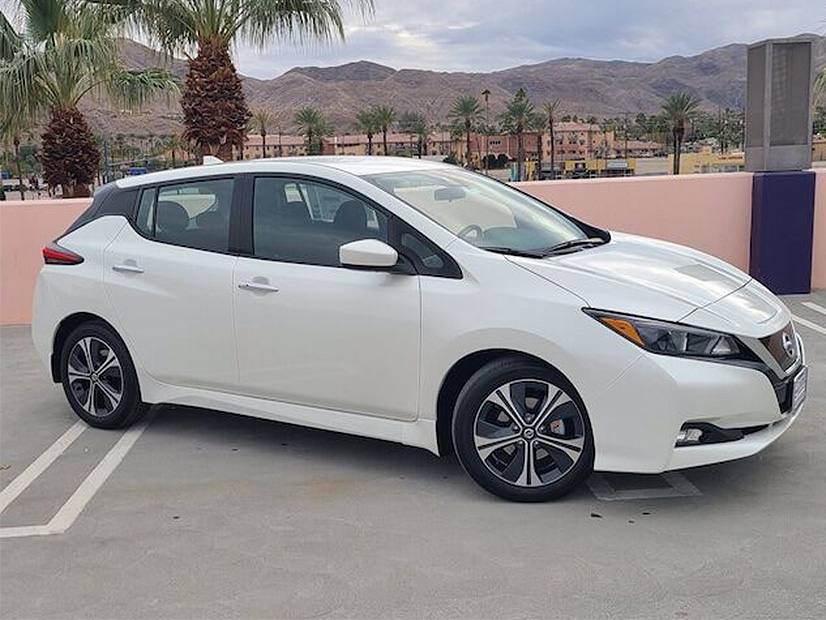
Low-income residents in certain parts of California can receive as much as $9,500 to scrap their old car and replace it with a cleaner vehicle, but the incentive may also increase their income tax bill, according to speakers at a workshop last week.
Two of the four air districts that are running the incentive program, called Clean Cars 4 All, issue 1099 forms to participants, according to Anthony Poggi, an air pollution specialist with the California Air Resources Board (CARB). The 1099 form is used to report non-employment income to the Internal Revenue Service.
Poggi said that in addition to facing an increased tax liability, Clean Cars 4 All participants who receive a 1099 form may also lose their eligibility for other income-based programs because the incentive adds to their reported income.
“[It] really can lead to a nasty surprise tax bill when they have to file,” said Chris Chavez, deputy policy director for the Coalition for Clean Air.
The discussion of 1099 forms came during a Jan. 20 CARB workgroup meeting on proposed changes to the Clean Cars 4 All program.
Air Districts Administer
CARB provides funding for the Clean Cars 4 All incentive program to air districts that administer it. The four districts with incentive programs include the Bay Area Air Quality Management District (AQMD); the Sacramento Metropolitan AQMD; the South Coast AQMD, which calls the program Replace Your Ride; and the San Joaquin Valley Air Pollution Control District (APCD), which calls the program Drive Clean in the San Joaquin.
The incentives vary depending on where a participant lives, their income level and the type of replacement vehicle being purchased. In the San Joaquin program, for example, the maximum incentive of $9,500 is available to someone who lives in a disadvantaged community, has an income of 225% or less of the federal poverty level, and is buying a plug-in hybrid or electric vehicle.
A participant buying a plug-in hybrid or a zero-emission vehicle may also receive up to $2,000 for electric vehicle supply equipment or pre-loaded charge card, according to CARB’s program criteria.
After receiving a new car, the participant must drive their old car to an approved dismantling facility. Participants also have an option to buy an electric bike or receive a prepaid public transit card instead of buying a new car.
Poggi noted that CARB does not issue 1099 forms for vehicle incentives it administers, such as the Clean Vehicle Rebate Program. He said CARB has been searching for assurances that the 1099 forms aren’t necessary for the Clean Cars 4 All program.
“We’re doing everything we can … trying to reach out to different agencies and different folks in government to kind of get a grasp on what it would take,” he said.
Program Expansion
The San Diego County Air Pollution Control District is in the process of developing a Clean Cars 4 All program, which it hopes to launch this year.
And more districts may soon be able to participate. CARB’s current Clean Cars 4 All rule limits participation to air districts with populations greater than one million. But a proposed revision to the regulation would remove that restriction.
Smaller districts that don’t have resources to complete tasks such as outreach and education would be able to work with a program administrator selected by CARB. The next public meeting on Clean Cars 4 All will likely focus on CARB’s solicitation of a public administrator.
The proposed regulation would also give districts more flexibility to set requirements for the incentive. A district could decide to make income limits more stringent, such as capping eligibility at 300% of the federal poverty level rather than the 400% that is in CARB’s criteria.
A district could also further restrict eligible types of replacement vehicles in the program. CARB’s criteria allow replacement vehicles to be hybrid vehicles that meet or exceed a specified fuel economy rating, a plug-in hybrid or a zero-emissions vehicle. A district could decide to remove hybrid vehicles from the list.
A district would be required to include its changes to income requirements or eligible vehicles in an implementation proposal that is submitted to CARB.
In November, the CARB board approved $75 million in funding for Clean Cars 4 All for 2021-22. (See CARB Approves $1.5B Clean Transportation Package.)
The board allocated $28 million to South Coast AQMD; $15 million each to the Bay Area AQMD and San Joaquin Valley APCD; $2 million to Sacramento AQMD; and $5 million to San Diego APCD. Another $10 million was set aside in a strategic reserve.
Funding for a potential expansion of Clean Cars 4 All won’t be finalized until after lawmakers approve the 2022-23 state budget.


